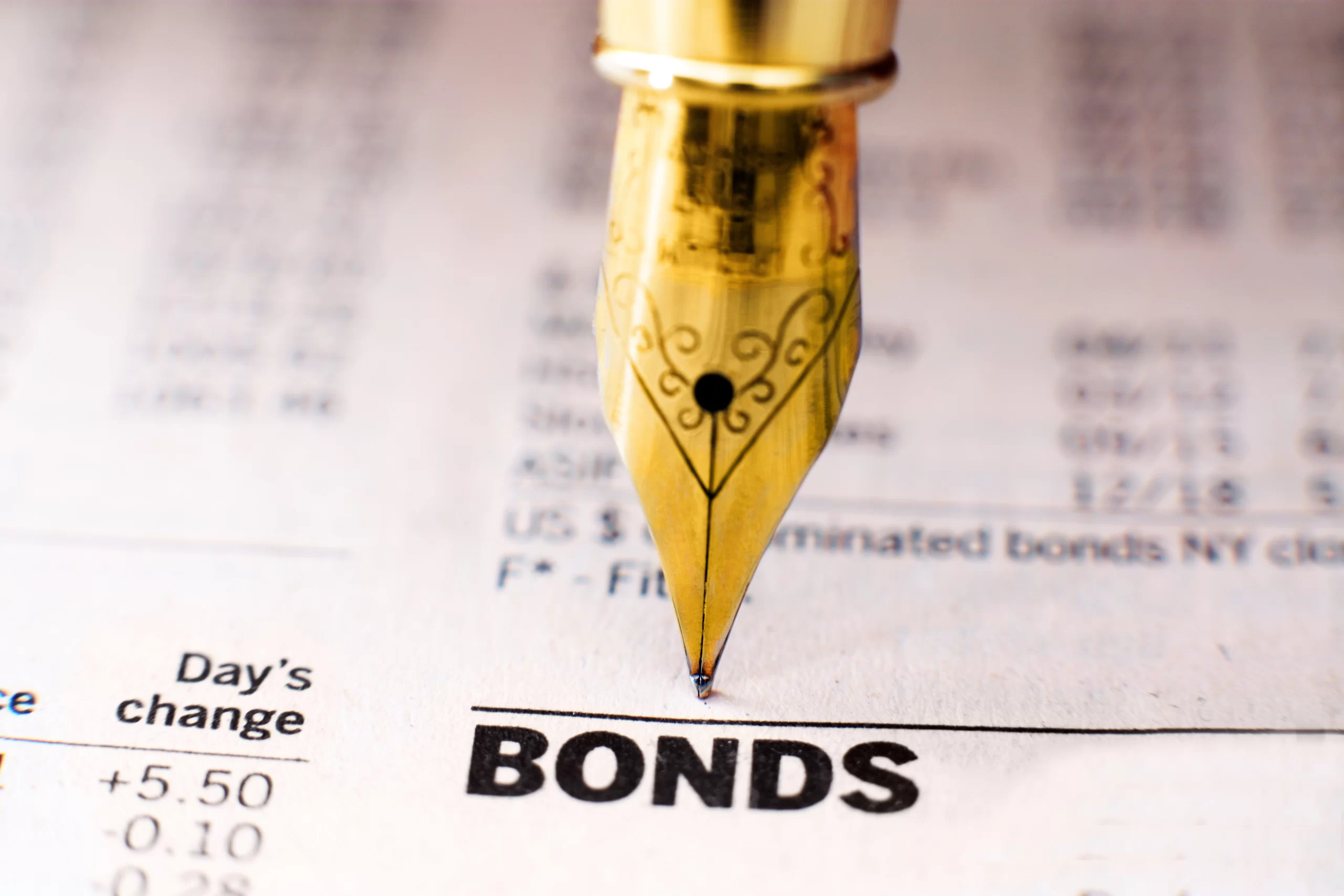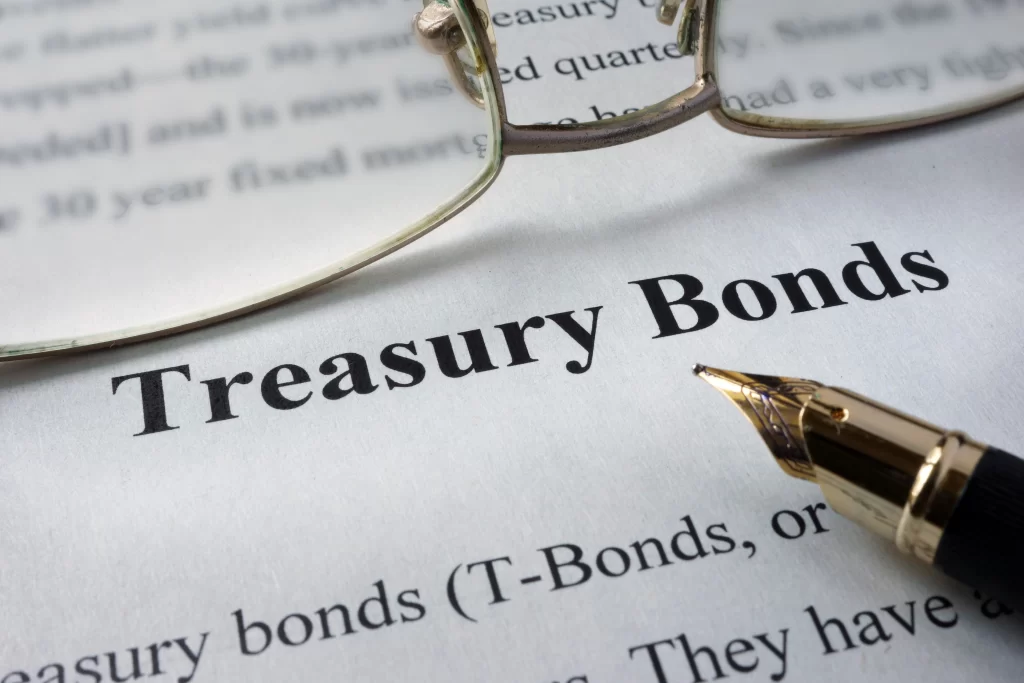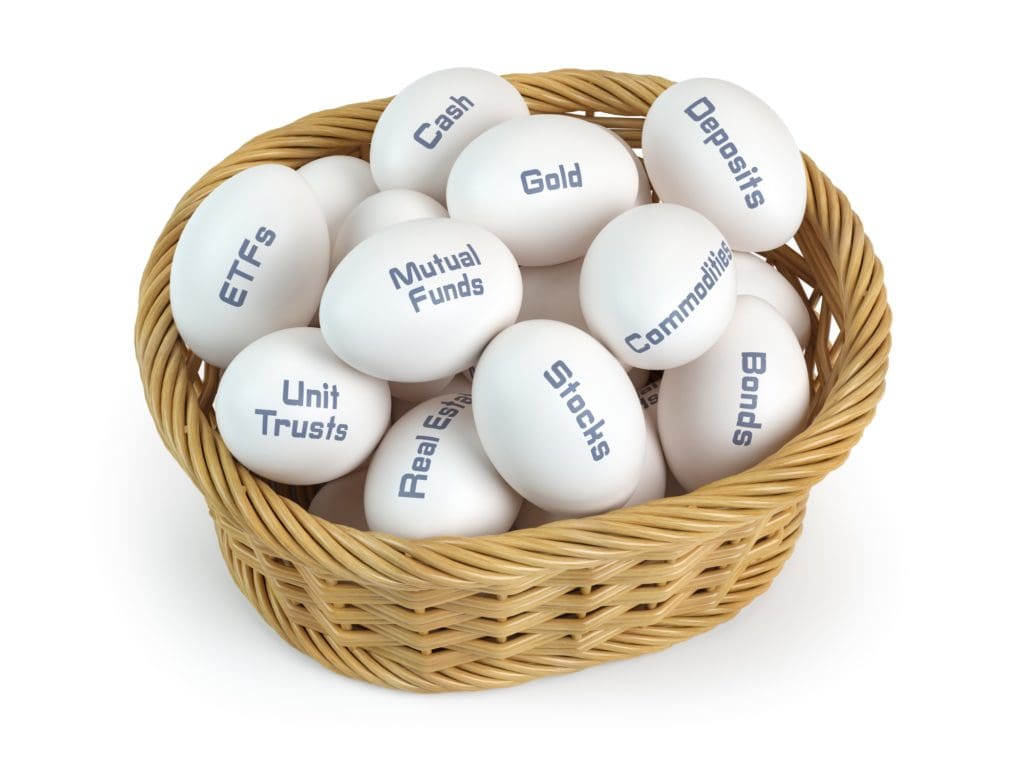
Investing In Bonds 101: Simple Beginners Guide on Bonds
In previous posts, I talked about investing in bonds, specifically investing in Kenyan government securities, and how to open a CDS account for trading. But how much do you know about bonds?
What does a bond mean? Are there risks when investing in bonds? And, perhaps, the most important question every investor has at the back of their head is, what are the advantages of investing in bonds?
Fortunately, this website is about demystifying all things finance, including investment matters.
So, let’s talk about bonds!
What Are Bonds And How Do They Work?
Basically, a bond is a loan where the bondholder/investor lends the bond issuer money. A bond issuer can be a government or corporation. The main reason why these institutions issue bonds is to raise funds for various projects, like funding capital-intensive projects.
How Bonds Work
When you invest in bonds, you are lending money to the institution. So, you give the institution a loan by buying the bond. You will receive interest payments throughout the bond’s life and your initial capital when the bond reaches maturity.
The repayment of your bond investment will depend on the terms of the specific bond. Each bond has its terms and conditions, usually highlighted in the issue document or the prospectus.
However, with most bonds, you will receive regular income payments, mostly semi-annually. This is the interest or coupon payment. Then, upon maturity, the bond issuer redeems the bond, repaying your initial investment, also referred to as the face value.
For example, let’s assume you want to invest Ksh. 1M in a bond with a maturity of 10 years, semi-annual coupon payments, and an annual coupon rate of 12%.
Based on this, you will receive regular interest payments every 6 months throughout the bond’s lifetime, that’s 6% of the Ksh. 1M every 6 months. Then, on the maturity date, after 10 years, the bond issuer will pay back your Ksh. 1M. The interest you will receive through the years will be your return on the investment.
Besides earning a return through interest payments, bond investors can also make money through capital gains. This happens if the bond’s price is higher than its face value in the secondary market and the investor is willing to sell instead of holding it to maturity.
Basic Bond Terms You Should Know
Like any other investment, it is important to understand what you are getting yourself into. With bonds, that means having a clear grasp of the most basic terms.
Whenever you read a prospectus of a newly floated bond, you want to be in a position where you understand what it means for you as an investor. From how long you can wait to get your capital back to the interest returns you will receive, how often, and other special conditions.
Here are the most basic terms you should know;
Face Value or Par Value
A bond’s face or par value is the price at which the bond issuer issues the bonds to the investors.
Market Price
This refers to the bond’s price in the secondary market. Remember that bonds are traded in the secondary market after issuance?
Thus, the bond’s price indicated in the secondary market is the market price. It varies over time, depending on several factors, like interest rates.
Maturity Date
It refers to the end or due date of the bond. Upon maturity, the bond issuer will pay your principal investment and the final interest repayment. Also, if you have been receiving regular interest repayments based on the type of bond, these will cease, too.
Bonds have varying maturity rates, usually short, medium, or long-term. Short-term bonds have 1 – 3 years maturity periods, although they are rare. Medium and long-term bonds are more common, with maturities of 4 – 10 and 10+ years, respectively.
When choosing a bond to invest in, it is important to pay a lot of attention to the maturity date. Because it means you will have to wait for that amount of time to get your principal back from the bond issuer. It also means you are more exposed to risks like interest and inflation rates.
Coupon Rate
The coupon rate, also the coupon interest rate, refers to the interest rate the bond issuer pays the bondholder.
Yield to Maturity (YTM)
In basic terms, YTM is the overall return an investor expects to earn from a bond investment if they hold the bond to maturity and receive all scheduled payments. Think of it as the internal rate of return (IRR) for your bond’s investment. The YTM can be different from the coupon rate.
YTM is expressed as an annualized percentage. Because of this, investors use YTM to compare the expected returns of different bonds, even if they have different maturities and coupon rates.
Clean Price vs. Dirty Price
A bond’s clean price refers to the price of the bond exclusive of any accrued interest. A good example of a clean price is during the issuance of a new bond at the primary market.
Dirty price includes any accrued interest between its coupon payments. So. that’s the bond’s price plus its accrued interest. An example of a dirty price is the quoted price when you buy a bond in the secondary market.

Types Bonds
There are several types of bonds:
Government Bonds
Also referred to as Treasury Bonds, are issued by a government of a specific country (federal government). A good example of this is T-Bonds issued by CBK. Governments issue various bonds for several reasons, including boosting the economy, funding budgetary needs, and supporting sending.
Corporate Bonds
These are issued by corporations. Companies that float bonds are usually seeking funds to fund;
- Operating expenses
- Capital-intensive investments, e.g., new machinery, business expansion, etc
- Acquisitions
Corporate bonds have a higher risk than government-issued bonds.
Municipal Bonds
Municipal bonds are issued by state, county, and local governments. These are usually tax-free, making them an attractive investment choice for many investors.
For instance, in Kenya, county governments could issue municipal bonds to raise funds for the county’s projects, like infrastructure.
Unfortunately, we do not have any municipal bonds in Kenya yet.
The above bonds can either be;
Fixed Coupon Bonds
They are referred to as fixed coupon or fixed rate bonds because the interest payments remain the same throughout the bond’s life.
For instance, if the bond has a maturity period of 10 years and a coupon rate of 14.5% per annum, you can expect to receive the same annual coupon rate for that period of 10 years.
Infrastructure Bonds
Institutions issue these to raise funds for infrastructural projects, like highways, railways, airports, pipelines, bridges, and terminals, among other major infrastructures.
While CBK issues Infrastructure bonds, they are not as common as fixed coupon bonds. Although they are not as common, they receive a lot of interested investors. Why? Because, unlike most of the other bonds, infrastructure bonds are tax-exempt. That means your interest returns are not taxed like with fixed-rate bonds.
Zero-Coupon Bonds
Zero-coupon bonds do not pay any interest returns during the bond’s life like other bonds. Instead, they trade at a discount. These are similar to Treasury Bills (T-Bills) that also sell at a discount.
That means you don’t receive interest payments during the bond’s life like with fixed-rate and infrastructure bonds. This is actually the main difference between zero-coupon bonds and regular bonds.
As an investor, you make a return during the bond’s maturity when you receive your repayment, which is the bond’s face value and not the discounted price you paid when purchasing the bond.
For example, let’s assume there is a zero-coupon bond with a face value of Ksh. 1,000 but CBK is selling it at a discounted price of Ksh. 95. As an investor, you will lend CBK Ksh. 95, but at maturity, CBK will pay you Ksh. 1,000. In this case, you will have made a return or profit of Ksh. 5.
Fortunately, CBK has a pricing calculator that you can use to estimate how much you might pay for a zero-coupon bond.
Having said that, CBK rarely issues zero-coupon bonds. The most common ones you will see floated are fixed-coupon and infrastructure bonds.
Floating-Rate Bonds
These are the opposite of fixed-rate bonds. The interest rate payments of a floating-rate bond fluctuate over its life. The coupon rate usually resets on each payment date, depending on the prevailing market rate.

The Pros of Investing in Bonds
Capital Preservation
Unlike shares, bond investments repay the capital or principal amount at maturity. This has made bonds the ideal investment asset for risk-averse investors or those with a cash flow liability at a specific date in the future. This is even more common with government bonds as they are less riskier than corporate bonds.
Regular Income Stream
There is a reason investment and portfolio managers encourage and incorporate the most significant portion of a portfolio into bonds for the elderly. As mentioned earlier, most bonds pay the interest return regularly.
Mostly, you will have a bond paying interest returns semi-annually. So, every 6 months, you have a guaranteed source of income. That’s money you can count on for expenses or reinvesting and earning more.
Portfolio Diversification
Portfolio diversification is a necessity for any investor. It’s the basic translation of ‘not putting all your eggs in one basket.’ So you buy different assets for your investments to spread the risk.
Bonds are great for diversification because they are less risky than other asset classes, like shares and real assets. Additionally, bonds have an inverse relationship with shares. That means when the share prices are low, bond prices increase. If you have bonds and shares in your portfolio during such a moment, the bonds counter the losses your shares are making. This will save you from losing money on both ends.
Capital Appreciation
Last but not least, you can invest in bonds as a way of cashing in on capital appreciation. This happens when the bond’s market price exceeds its face value.
A drop in interest rates or improvement in the bond’s credit rating can increase its market price. So, if you don’t want to hold your bond investment till maturity, you can sell in the secondary market and enjoy your return on the rice increase.
Risks of Investing in Bonds
While bonds are the safest investment assets compared to other assets, like equities and real estate, they still carry some risk. These include;
Liquidity Risk
Bonds are a bit illiquid compared to cash and equivalents, like Mutual Funds. Plus, the possibility of selling your bond investment in the secondary market at a fair price is not always guaranteed. This can lead to selling your bond at a discount.
That’s why these are only ideal for long-term investment goals. A good example is investing in bonds to match your retirement or education needs for your kids.
Additionally, you should only put money in these investments you know you will not need to liquidate. Start by ensuring you have a fully funded emergency fund, the necessary insurance policies to manage your risks, and additional savings for other short and medium-term goals.
Inflation Risk
Inflation lowers your purchasing power. But how does it affect your investment?
That’s where the difference between nominal and real interest rates comes in;
- Nominal interest rate – it’s the interest rate with no inflation adjustments. You can only earn a nominal interest rate if there is no inflation rate.
- Real interest rate – it’s the interest rate that has been adjusted for inflation. In simple terms, the real interest rate is the nominal interest rate minus the inflation rate. Real interest rate shows your actual gain/loss in purchasing power.
If the inflation rate trails the interest return of your bond investment, you are basically making a loss as you lose your purchasing power.
For instance, if the bond has a return of 11% and the inflation rate is 5%, your real return is 6%. However, if the inflation rises to 8% and the interest is still 11%, your real return will reduce to 3%. Imagine what happens if the inflation rate rises above the interest rate, say at 12%. It means your interest return cannot afford the same basket of goods at all.
Interest Rate Risk
When interest rates go up, bond prices go down, and vice versa. The risk is that the interest rate might outpace the bond’s coupon rate during its life. So, if you were to sell your bond, you are most likely to sell it at a discount.
Bonds with lower coupon rates and longer maturities are more prone to interest rate risk. However, you don’t have to worry about interest rate risk if you hold your bond to maturity and the issuer doesn’t default.
Credit Risk
Credit risk refers to the risk that the bond issuer will not make timely payments. In case of credit risk, you also risk losing your capital investment, not just the interest repayments.
Although corporate bonds are considered riskier, it also applies to government bonds. When governments default, it is referred to as sovereign default. It’s not as common, but it has happened, with countries like Ghana and Sri Lanka recently defaulting on foreign debt. But don’t let this scare you. Government securities are still safer and have a lower default rate.
You can shield yourself by checking the credit risk rating of a bond before investing. Bonds have a credit rating from AAA to AA, A, BBB, BB, B, C, and D. D is the lowest rating, signaling a high chance of the issuer defaulting on the bond. The higher the credit rating, the lower the credit risk.
While knowing the credit rating of a bond is necessary, it shouldn’t be your sole reason for choosing to invest in a specific bond.
Reinvestment Risk
Remember that some types of bonds send interest rate repayments regularly? In the case of Kenyan bonds like fixed-rate and infrastructure bonds, it’s semi-annually. So, twice a year, you will receive your interest returns.
With most investors, this interest earning is reinvested and continue to earn more money. That’s where reinvestment risk comes in. If the interest rates decrease, you will reinvest your earnings in assets with a lower return.
Bottom Line
Bonds are a great investment asset to have in your portfolio. But it’s important to understand how they work before Investing in bonds. It will help you determine whether they are ideal for your investment goals. And if so, you can choose the best allocation proportion for your portfolio.
When deciding what bonds to invest in, ensure you understand the basics, like the maturity, coupon rate, YTM, and type of bond.
FAQ
What’s The Difference Between a Treasury Bond and a Treasury Bill?
T-Bills and T-Bonds have a few key differences. For starters, Bills are short-term government securities with maturities of less than 1 year. They are also available on the primary market only.
Bonds, on the other hand, have long-term maturities, usually 5+ years. They are also available in the primary and secondary markets.
Are Bonds a Better Investment Than Shares?
The best investment assets to choose will all depend on your investment goals.
One thing to keep in mind is that bonds are less risky than shares. But, it also means that they have a lower return than shares. So, if you are looking for a less risky asset to invest in, bonds are the way to go. And if you are willing to take more risk, shares are an ideal option.
That said, it’s important to invest in different asset classes to ensure you spread your risks. I mentioned this earlier on portfolio diversification. So, instead of investing in bonds only, how about having an asset allocation with bonds and shares?






